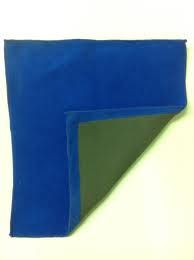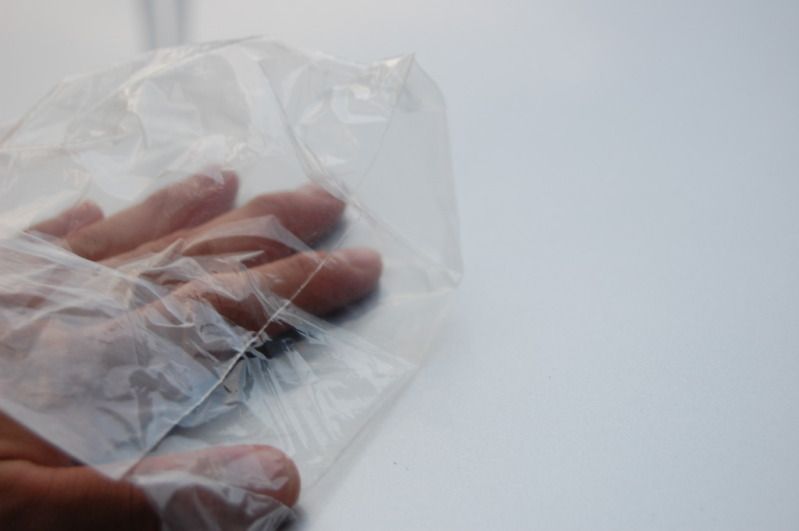togwt
The Old Grey Whistle Test

Nanoskin Surface Prep Towel
Surface contaminants
As the name implies they sit above the surface of the paint; they are subject to greater abrasive forces than the surrounding areas when a surface prep towel is rubbed over them. As a result, they are abraded away and removed. You may be questioning at this point will the abrasives in the towel affect the surrounding paint. This can be considerably lessened by using a suitable lubricant. But be aware that the surface prep towel contains abrasives and therefore may induce surface scratches that should be removed by polishing
S.M. Arnold® U.S. Patent No. 7,867,967 - Other U.S. & International Patents Pending
Then why not simply use a surface prep towel to remove all surface contaminants; the answer is that a surface prep towel can only be used to remove surface contaminant, but a potential problem arises in that organic contaminants (tree resin and sap, honeydew and insect exoskeletons an), which generally comprise much larger particulates, which are more efficiently removed with a suitable chemical 'safe' solvent, than inorganic contaminants (rail and brake dust, bitumen (tar), etc) and therefore have greater potential to cause surface scratches as the towel is moved across the paint surface.
Given that some contaminant residue (acid rain, industrial fallout, sintered brake or rail dust) are usually highly acidic and / or will permeate a paint surface, it makes far more sense to remove them chemically and neutralize the paint surface rather than by using an abrasive polish, as dissolving them using a paint decontamination system and then rinsing them away virtually eliminates the risk of causing surface scratches.
Paint Cleaning
Surface preparation is one of the most important steps when polishing to achieve a flawless finish
Regardless of how clean you think your paint is, there are still contaminants stuck on the paint that you need to remove before waxing or polishing your paint. Road film, oil, tar, grease, water spots and other environmental contaminants bond to the paint and glass surfaces and are difficult to remove. Glass and especially the windshield and rear window on trucks and SUVs are prone to these surface contaminants.
Before polishing a paint surface ensure the surface is free from both surface and sub-surface contaminants. This is vital; if your car is covered with metallic brake particles you will introduce new scratches in the surface whilst polishing it. Be cognizant that detailer’s clay or a surface prep towel will only remove surface contaminants; sintered brake dust permeates the clear coat facilitating a conduit to the paint system matrix, allowing moisture / corrosion to penetrate. This below surface corrosion should be removed with a sub-surface decontamination system.
Always remove surface contaminants before you polish. One of the easiest methods of ensuring that your surface is contaminant free is the so-called ‘Bag Test’. After washing and drying your vehicle place a plastic sandwich bag over your hand or fingers, gently pass over the surface. Does the surface feel silky smooth or rough and gritty? If you felt roughness and/or grit, your surface is contaminated.

The Bag Test
Methodology
Use a Nanoskin surface prep towel (HD Nano Prep) and then a Chemical paint cleaner (Klasse AIO) and / or a Bituminous Asphalt remover (Stoners Tarminator) to remove above surface contaminants. Then proceed to remove sub-surface contaminants with decontamination product (IronX or ValuGuard) Repeat the ‘Bag Test’ to ensure the paint surface is free from contaminants
Do I need to Clay my Surface?
Removing surface contaminants is not always necessary. However, chances are if you need to ask that question, you have never used this process and you will likely have to take action.
To verify conduct the ‘Bag Test’ -after washing and drying your vehicle place a plastic sandwich bag over your hand or fingers, gently pass over the surface. Does the surface feel silky smooth or rough and gritty? If you fell roughness and/or grit, your surface is contaminated
This advanced polymerized rubber technology is the next generation of surface preparation, which will undoubtedly replace the use of detailer’s clay for the removal of surface contaminants. The surface prep towel works fast and achieves professional results with its advanced technology.
The surface prep towel was developed as a method of removing surface contamination beyond what can be removed by washing, by using an abrasive to ‘shear’ the particulate at surface level. This towel quickly, easily and safely removes paint over-spray, rail dust, brake dust, industrial pollution and other bonded surface contaminants from automotive paint, glass, mouldings and plastic. Works with your favourite surface lubricant product (see Towel Lubricant), is easily cleaned by simply rinsing off the accumulated contaminants with water. If you drop the towel on the ground, just rinse the towel with clean water and you're ready to keep using it.
Towel abrasives ratings 1/10 - Medium (Blue) 6/10, Fine (Grey) 4 /10- Like all abrasives it will leave surface scratches that may require removal by polishing
These 12 x 12- inch towel quickly, easily and safely removes paint over-spray, rail dust, brake dust, industrial pollution and other bonded surface contaminants from automotive paint, glass, mouldings and plastic.
After lubricating the towel, fold into quarters; always ensure that the towel surfaces are properly lubricated, including the towel surface you're using, the surface your hand is on and the surface that are folded onto each other. Without adequate lubrication the polymers will adhere to each other and the paint surface leave behind debris.
First Use
Initially use the surface prep towel on a glass surface to prime the polymerized rubber and then proceed to the rest of the painted surfaces
Conditions for use
Use only on clean, cool paint and out of direct sunlight.
- Best operation temperature range is 50 – 100. °F.
- Do not use on surfaces over 145. °F otherwise the polymerized rubber surface will start to melt.
- Avoid using soap and water as a lubricant.
- Use only a showroom prep or clay lubricant to attain the best results.
- Towel is not solvent resistant
- 40 -50 usages per towel (dependent upon contaminants encountered)
Application
- Thoroughly wash vehicle prior to application.
- With your favourite showroom prep or clay lubricant, spray a generous amount onto the working surface and on the polymerized rubber surface of the towel.
- Using light pressure, gently slide towel from side to side.
- When the towel glides freely, the bonded surface contaminants have been removed.
- Wipe off the residual lubricant with a separate microfiber towel. Rub your hand across the surface; it should be as smooth
- Continue these steps until you have completed the entire vehicle.
Care
After each use, simply rinse the towel in clean water or a solution of ONR and warm water. Air dry flat; polymer surface up for the best results. DO NOT wring the towel dry
Pro
- You do not need to knead the towel
- When it becomes soiled they can be washed
Con
- Initial cost (~ $50)
Towel Lubricant
The critical safety factor is adequate lubrication; most clay retailers supply their detailing spray (QD) as a lubricant, the problem with many of them is that they contain some form of solvent or alcohol, which may cause the polymers to dry out, and spray waxes contain silicone and wax that negatively affect the towels abrasive ability The surfactants in some car soap will break down the plasticizers, causing the polymers to become hard, crumble and disintegrate
To provide sufficient lubrication the both the towel and the surface must be thoroughly saturated, problem is that a solvent dries out the polymers in the towel, which could cause surface marring, or cause the clay to disintegrate, or breakdown and become soft leaving streaks on the paint surface. Some car wash concentrates will also cause some of the same problems due to the synthetics, detergents and / or solvents used.
This thin film of lubrication provides a safety barrier that enables the towel to hydroplane across the surface. In other words, the towel is riding on a micro-thin film of lubrication between it and the paint surface removing the (protruding) surface contaminants by abrasion and encapsulation by the malleable clay. Without lubrication the clay would abrade the paint surface much like a wet-sanding block and will produce fine surface marring and may also leave polymer debris
The best way to describe the proper method for using the surface prep towel is to use plenty of the lubricant and aquaplane the towel over the surface in straight-line motions Highly alkaline detergents, some clay lubricants or solvents will break down the polymers making the towel surface soft, brittle, and it will eventually disintegrate.
Nanoskin GLIDE –a water- based silicone-free lubricant containing glycerin to provide superior surface lubrication, foaming agents and a surfactant to suspend the contaminants.
Alternatives
1. Dodo Born Slippy clay lube
2. Optimum ONR in a 1:20 solution with distilled water
Relevant Articles
1. “What will decontamination remove that washing / clay will not? “ - http://www.autopia.org/forum/guide-...-decontamination-remove-washing-will-not.html
2. “ValuGard Paint Decontamination System� - http://www.autopia.org/forum/autopi...42-valugard-paint-decontamination-system.html
